|
Ancient civilizations are the basis of the world as
we know it today, built on the ruins of 10,000 years of advanced
cultures such as the Greek, Roman, Mesopotamia, Mayan, Indus, Egyptian,
and others that we know primarily through archaeology and some written
records.
|
|
Mohenjo-daro
Mohenjo-daro , is an archeological site situated in the province of
Sindh, Pakistan. Built around 2600 BC, it was one of the largest
settlements of the ancient Indus Valley Civilization, and one of the
world's earliest major urban settlements, existing at the same time as
the civilizations of ancient Egypt, Mesopotamia, and Crete. Mohenjo-daro
was abandoned in the 19th century BC, and was not rediscovered until
1922. Significant excavation has since been conducted at the site of the
city, which was designated a UNESCO World Heritage Site in 1980.
|
|
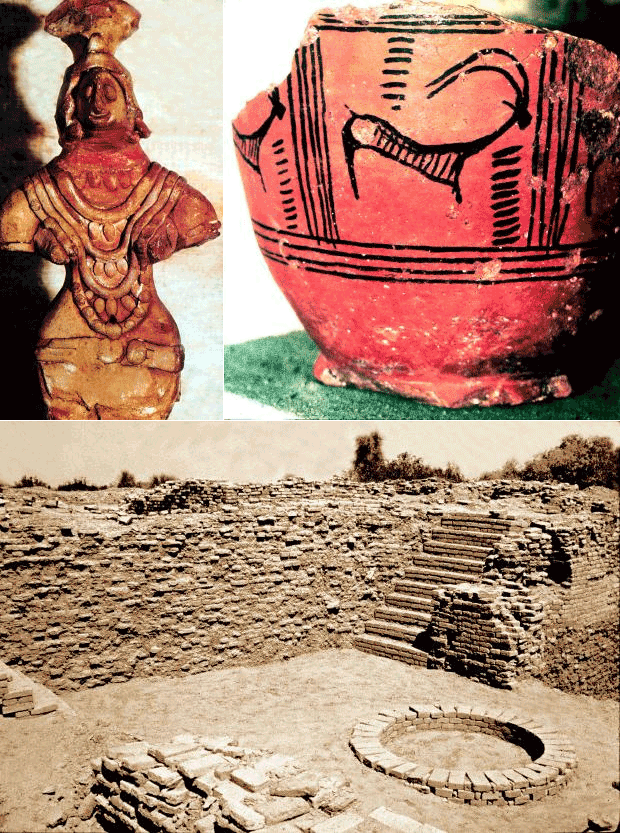 |
|
Taxila
Taxila is a Tehsil in the Rawalpindi District of Punjab province of
Pakistan. It is an important archaeological site. Taxila is situated
about 32 km (20 mi) northwest of Islamabad Capital Territory and
Rawalpindi in Panjab; just off the Grand Trunk Road. Taxila lies 549
metres (1,801 ft) above sea level. The city dates back to the Gandhara
period and contains the ruins of the Gandhāran city of Takaśilā which
was an important Hindu and Buddhist centre, and is still considered a
place of religious and historical sanctity in those traditions. In 1980,
Taxila was declared a UNESCO World Heritage Site with multiple
locations.
|
|
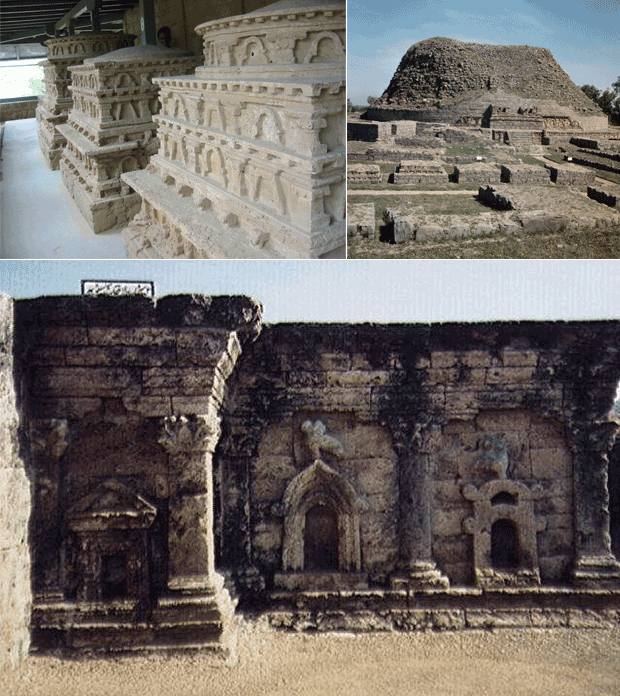
|
|
Gandhara
Gandhara region had once been the hallowed centre of Buddhism, the
cradle of the world famous Gandhara sculpture, culture, art and
learning. The archaeological remains found in Taxila, Peshawar,
Charsadda, Takht Bhai, Swat and rock carvings along the ancient Silk
Road (KKH) have well recorded the history of Gandhara. Lying in Haro
river valley near Islamabad, Taxila, the main centre of Gandhara, is
over 3,000 years old. Taxila has attracted the attention of the great
conqueror, Alexander in 327 B.C., when it was a province of the powerful
Achaemenian Empire. It later came under the Maurian dynasty and reached
a remarkable matured level of development under the great Ashoka. Then
appeared the Indo-Greek descendants of Alexander’s warriors and finally
came the most creative period of Gandhara.
|
|
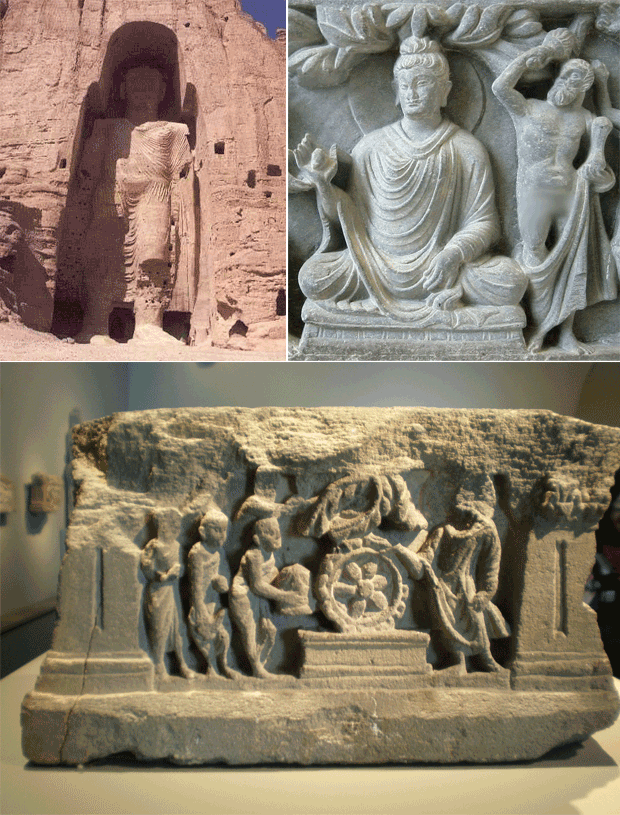
|
|
Harappa
Harappa is an archaeological site in Punjab, northeast Pakistan, about
35 km (22 mi) west of Sahiwal. The site takes its name from a modern
village located near the former course of the Ravi River. The current
village of Harappa is 6 km (4 mi) from the ancient site. Although modern
Harappa has a train station left from the British times, it is today
just a small (pop. 15,000) crossroads town. The site of the ancient city
contains the ruins of a Bronze Age fortified city, which was part of the
Cemetery H culture and the Indus Valley Civilization, centered in Sindh
and the Punjab. The city is believed to have had as many as 23,500
residents—considered large for its time.
|
|
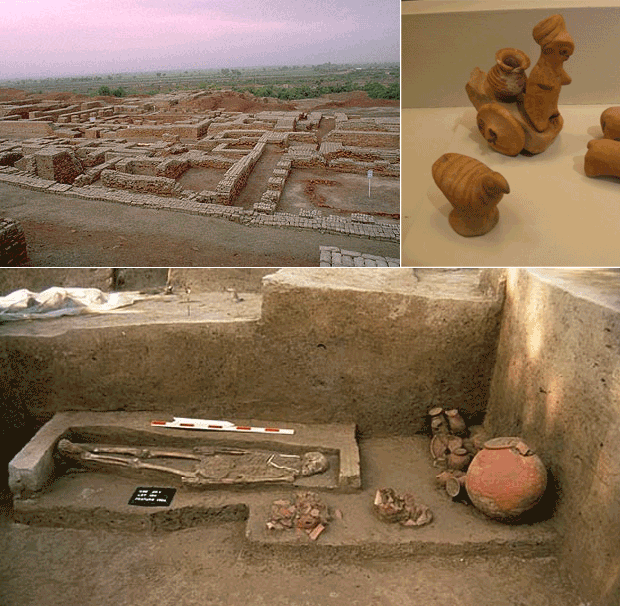
|
|
Mehar Garh
Mehrgarh, one of the most important Neolithic (7000 BCE to c. 2500 BCE)
sites in archaeology, lies on the "Kachi plain" of now Balochistan,
Pakistan. It is one of the earliest sites with evidence of farming
(wheat and barley) and herding (cattle, sheep and goats) in South
Asia."Mehrgarh is located near the Bolan Pass, to the west of the Indus
River valley and between the now Pakistani cities of Quetta, Kalat and
Sibi. The site was discovered in 1974 by an archaeological team directed
by French archaeologist Jean-François Jarrige, and was excavated
continuously between 1974 and 1986, and again from 1997 to 2000. The
earliest settlement at Mehrgarh—in the northeast corner of the 495-acre
(2.00 km2) site—was a small farming village dated between 7000 BCE to
5500 BCE and the whole area covers a number of successive settlements.
Archaeological material has been found in six mounds, and about 32,000
artifacts have been collected.
|
|
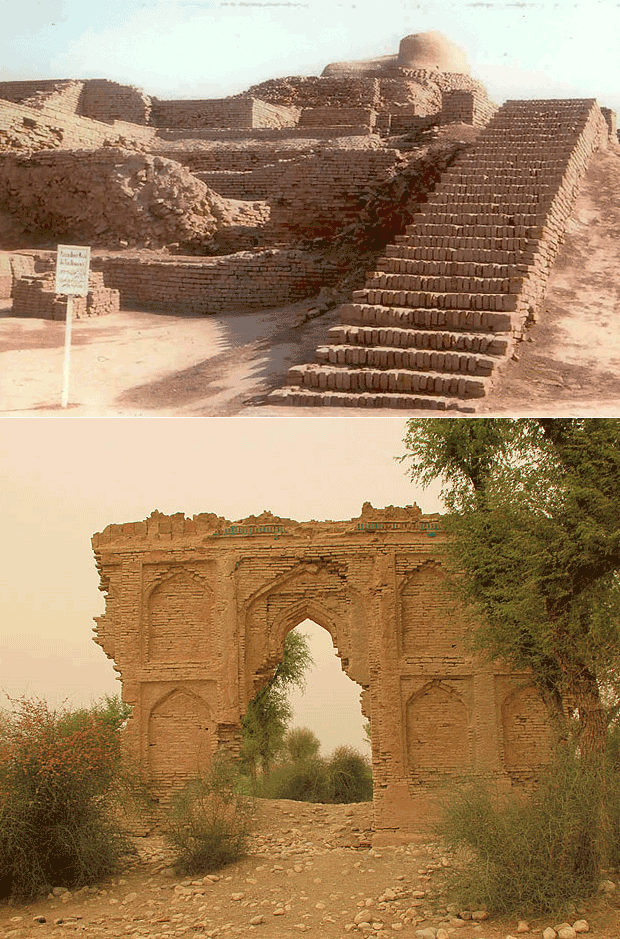 |